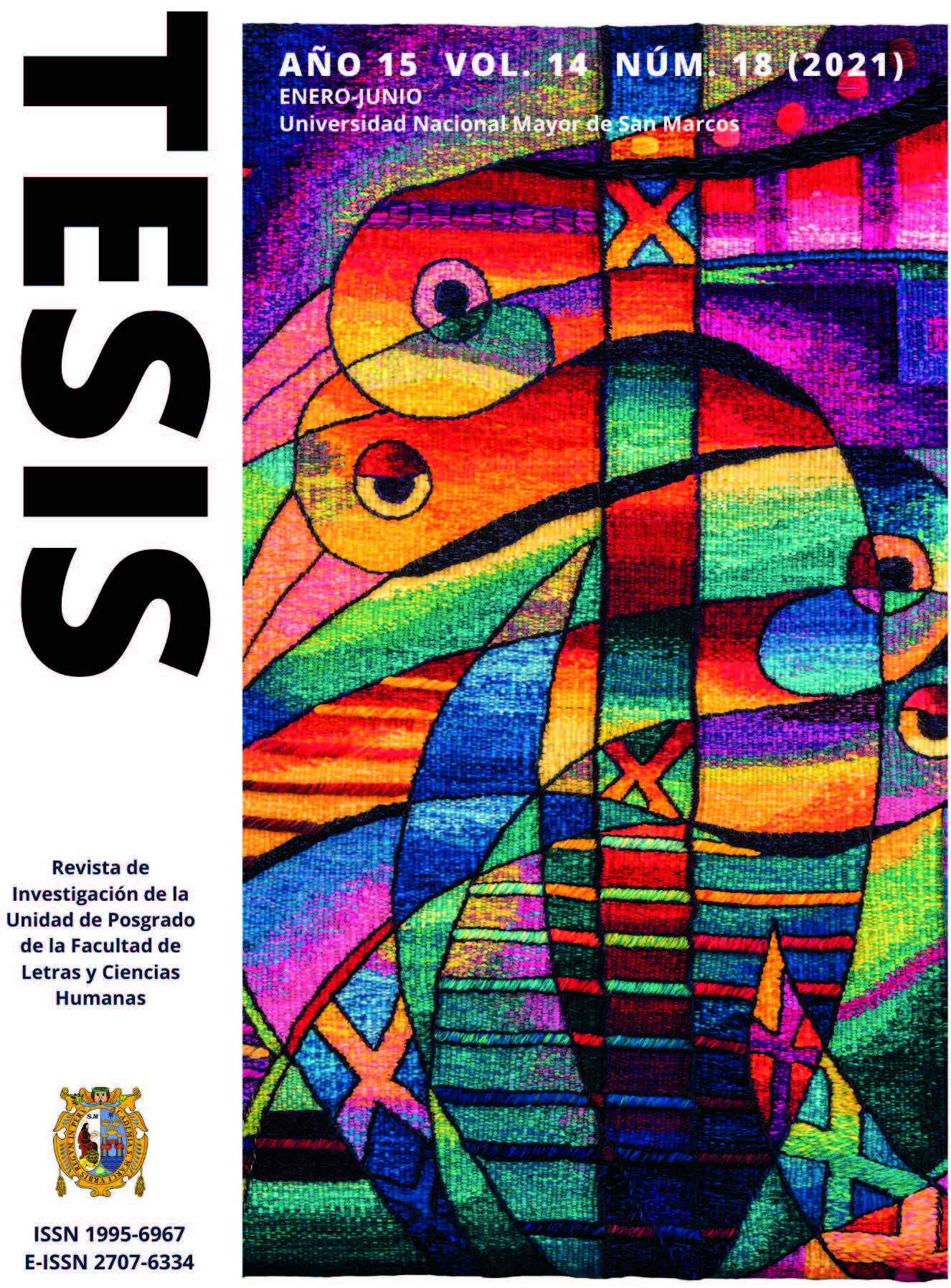Polysemy and cognition of the verb “ir” in Spanish
DOI:
https://doi.org/10.15381/tesis.v14i18.20707Keywords:
cognitive linguistics, polysemy, go, semantic network, spatialityAbstract
The polysemy of the verb ir is approached from the cognitive perspective of language. The main objective of the present work is to determine the different senses or meanings of the word ir. It is revealing to define the network of semantic relations of this verb form which, in principle, is associated with physical realities. It is detected that, although there are meanings linked to other domains of reality that are not of a physical order, the metaphorical cognitive mechanisms make possible the conceptualization of different domains as if they were of the material world. Strictly speaking, we detect that a semantic network is formed from a central meaning from which other peripheral meanings radiate.
References
Croft, W. y Cruse, A. (2004). Cognitive linguistics (Cambridge Textbooks in Linguistics). Cambridge University Press.
Evans, V. y Melanie G. (2006). Cognitive linguistics. An introduction. Edinburgh University Press.
Evans, V. y Paul C. (eds.) (2010). Language, cognition and space: The state of the art and new directions. Equinox.
Evans, V. y Stéphanie, P. (eds.) (2009). New directions in cognitive linguistics. John Benjamins Publishing Company.
Fauconnier. G. (2004). Mental spaces, language modalities, and conceptual integration. In S. Davis y B. Gillon (eds.). Semantics: A reader. Oxford University Press.
Filipczuk-Rosińsk, S. (2016). The comparison of a human being is a plant metaphor between the English and Polish language. World Journal of Social Science, 3(1), 15-21.
Goldberg, A. E. (1996). Jackendoff and construction-based grammar. Cognitive Linguistics, 7, pp. 3-19.
Ibarretxe-Antuñano, I. y Valenzuela, J. (2012). Lingüística cognitiva. Anthropos Editorial.
Ibarretxe-Antuñano, I. (1999). Polysemy and metaphor in perception verbs: A cross-linguistic study. [Tesis de doctora en Lingüística, Universidad de Edimburgo]. https://ethos.bl.uk/OrderDetails.do?uin=uk.bl.ethos.652784
Jackendoff, R. (2002). Foundations of language. Oxford University Press.
Kövecses, Z. (2010). Metaphor: A practical introduction. Oxford University Press.
Lakoff, G. y Turner, M. (1989). More than cool reason: a field guide to poetic metaphor. University Chicago Press.
Lakoff, G. (1987). Women, fire and dangerous things: What categories reveal about the mind. Chicago University Press.
Lakoff, G. y Johnson, M. (1980). Metaphors we live by. University of Chicago Press.
Langacker, R. (2009). Investigations in cognitive grammar. Mouton de Gruyter.
Langacker, R. (2008). Cognitive grammar: A basic introduction. Oxford University Press.
Moreno F. (2012). Sociolingüística cognitiva. Proposiciones, escolios y debates. Iberoamericana.
Taylor, J. R. (2003). Cognitive grammar. Oxford University Press.
Downloads
Published
Issue
Section
License
Copyright (c) 2021 Gisela Silva Escudero

This work is licensed under a Creative Commons Attribution 4.0 International License.
THE AUTHORS RETAIN THEIR RIGHTS:
(a) The authors retain their trademark and patent rights, and also on any process or procedure described in the article.
(b) The authors retain the right to share, copy, distribute, execute and publicly communicate the article published in Tesis (Lima) (in example, depositing the article in an institutional repository or publish it in a book), with recognition of its initial publication in the Tesis (Lima).
(c) The authors retain the right to make a later publication of their work, to use the article or any part of it (for example: a compilation of their works, notes for conferences, thesis, or for a book), provided that they indicate the source of publication (authors of the work, magazine, volume, number and date).














